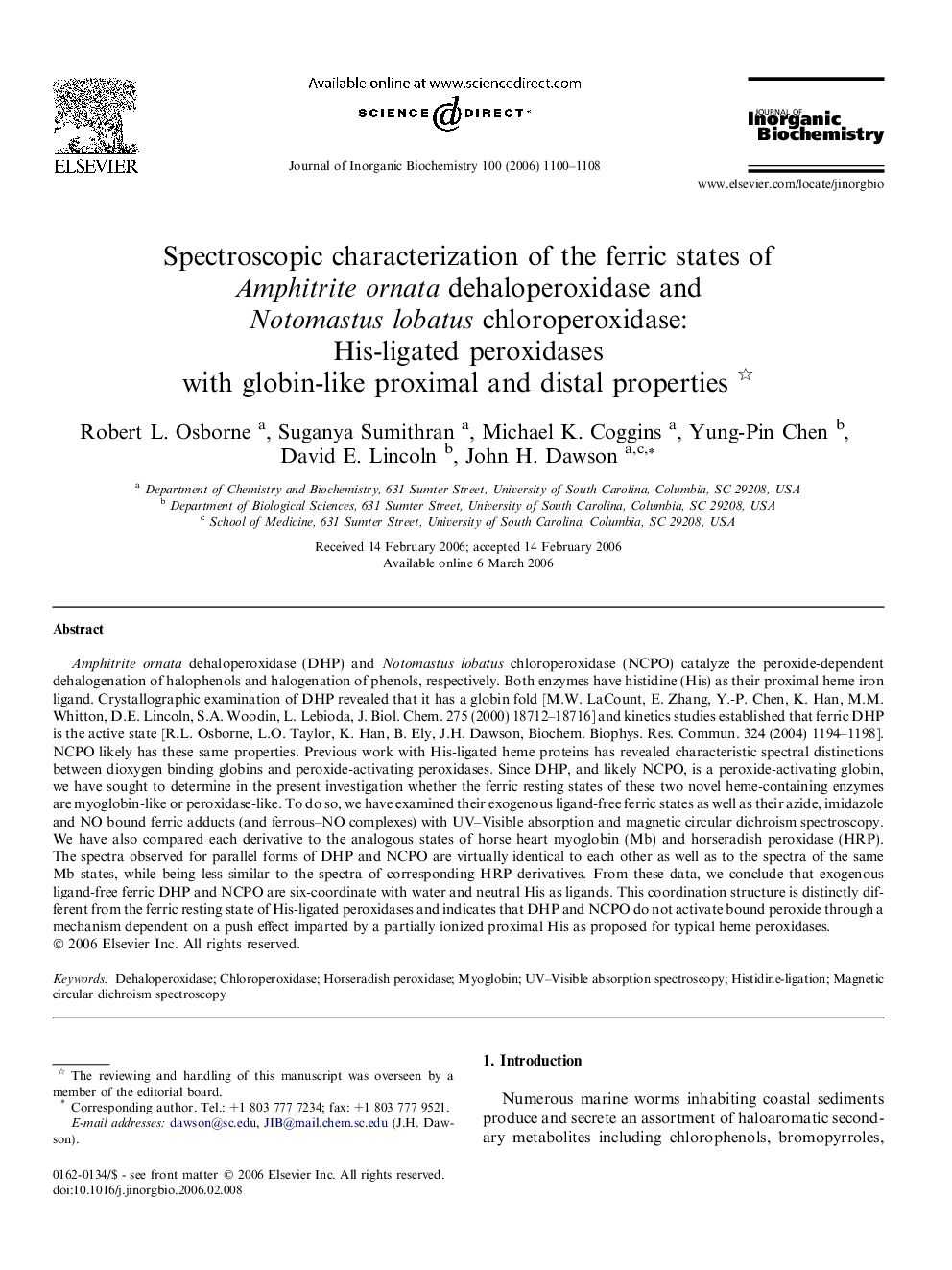| Article ID | Journal | Published Year | Pages | File Type |
|---|---|---|---|---|
| 1318205 | Journal of Inorganic Biochemistry | 2006 | 9 Pages |
Amphitrite ornata dehaloperoxidase (DHP) and Notomastus lobatus chloroperoxidase (NCPO) catalyze the peroxide-dependent dehalogenation of halophenols and halogenation of phenols, respectively. Both enzymes have histidine (His) as their proximal heme iron ligand. Crystallographic examination of DHP revealed that it has a globin fold [M.W. LaCount, E. Zhang, Y.-P. Chen, K. Han, M.M. Whitton, D.E. Lincoln, S.A. Woodin, L. Lebioda, J. Biol. Chem. 275 (2000) 18712–18716] and kinetics studies established that ferric DHP is the active state [R.L. Osborne, L.O. Taylor, K. Han, B. Ely, J.H. Dawson, Biochem. Biophys. Res. Commun. 324 (2004) 1194–1198]. NCPO likely has these same properties. Previous work with His-ligated heme proteins has revealed characteristic spectral distinctions between dioxygen binding globins and peroxide-activating peroxidases. Since DHP, and likely NCPO, is a peroxide-activating globin, we have sought to determine in the present investigation whether the ferric resting states of these two novel heme-containing enzymes are myoglobin-like or peroxidase-like. To do so, we have examined their exogenous ligand-free ferric states as well as their azide, imidazole and NO bound ferric adducts (and ferrous–NO complexes) with UV–Visible absorption and magnetic circular dichroism spectroscopy. We have also compared each derivative to the analogous states of horse heart myoglobin (Mb) and horseradish peroxidase (HRP). The spectra observed for parallel forms of DHP and NCPO are virtually identical to each other as well as to the spectra of the same Mb states, while being less similar to the spectra of corresponding HRP derivatives. From these data, we conclude that exogenous ligand-free ferric DHP and NCPO are six-coordinate with water and neutral His as ligands. This coordination structure is distinctly different from the ferric resting state of His-ligated peroxidases and indicates that DHP and NCPO do not activate bound peroxide through a mechanism dependent on a push effect imparted by a partially ionized proximal His as proposed for typical heme peroxidases.
